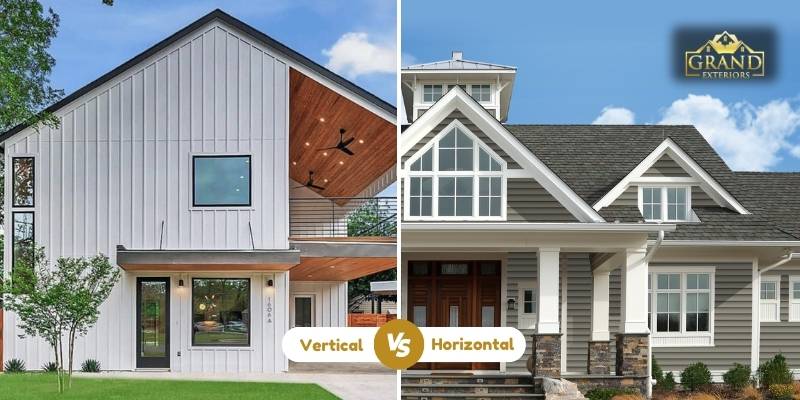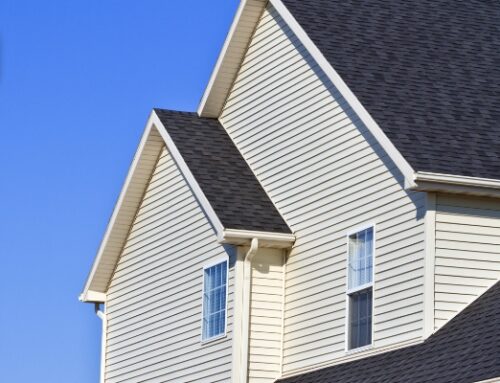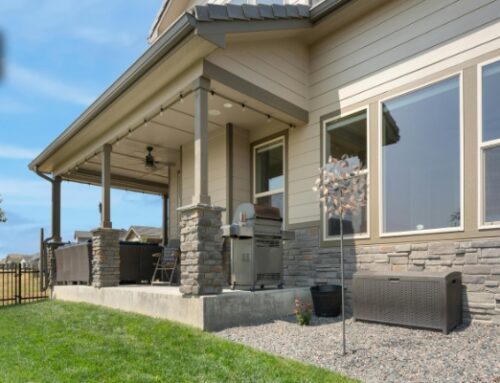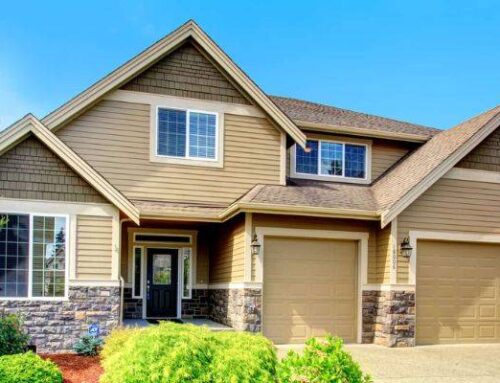Your home’s siding is an important design element that goes beyond protection. One of the most important choices you have to make? What should be installed vertically or horizontally?
Siding is necessary to increase the visual appeal and functionality of a home. One of the most important options for the house is whether to keep the siding horizontally or vertical. Each option provides different advantages and can dramatically change the overall form and experience of a property. The vertical siding, often associated with a modern and smooth appearance, can create confusion of height and grandeur, making it an attractive option for contemporary designs. In contrast, the horizontal siding provides a more traditional, classic vibe, which provides a sense of stability and heat. Beyond aesthetics, the option of siding orientation can affect factors such as maintenance, durability and weather resistance, which requires homeowners to consider their specific requirements and local climate conditions. The purpose of this article is to fly into the complications of siding orientations, to discover the benefits and shortcomings of both vertical and horizontal installation. By weighing these options thoughtfully, the owners of the house can take informed decisions that increase the value of their property and curb the appeal, ensuring long-term satisfaction with their siding options.
Read below to know the breakdown of the complications of siding orientation and guide you through the decision-making process.
1. Horizontal Siding: The Classic Choice
- Timely appeal-western lap siding (e.g. clapboard or Dutch lap) is the most common style, offering a traditional, neighborhood friendly form.
- Easy installation- because it follows the natural structure of most homes, installation is usually faster and more cost-effective.
- Weather performance – The properly installed horizontal siding sheds water well, under the rain with the overlapping board.
- Maintenance notes – To prevent moisture infiltration over time, there is a need to pay careful attention to shining and caulking on the seam.
Best for: colonial, cape cod, farm-style house, or anyone wants a safe, budget friendly option.
2. Vertical Siding: The Modern Edge
- Visual Height – Vertical lines make single-story homes appear taller and can give a striking contemporary or farmhouse vibe.
- Water Drainage – When designed with proper channels, vertical siding can shed rain even more efficiently than horizontal options.
- Less Common = More Impact – If you want to stand out in a sea of horizontal-sided homes, this is your go-to.
- Installation Complexity – Requires additional furring strips or a rain screen system to ensure proper drainage behind panels.
Best for: Modern, mid-century, or industrial-style homes; accent walls; or homeowners prioritizing unique design.
3. Key Factors to Consider
A. Architectural Style
- Traditional homes (Victorians, Colonials) almost always look best with horizontal siding.
- Modern builds can pull off vertical siding beautifully, especially with materials like metal or fiber cement.
B. Climate & Weather Resistance
- High-rain areas: Vertical siding with rain screens can outperform horizontal in heavy downpours.
- Windy regions: Horizontal siding generally handles wind better when properly secured.
C. Material Matters
- Vinyl: Works well in both orientations, but vertical requires heavier-duty panels.
- Wood: Traditional horizontal installation is easier to maintain.
- Metal/Fiber Cement: Vertical installation shines with these modern materials.
D. Budget & Labor
- Horizontal siding is usually 10-20% cheaper to install due to simpler framing needs.
- Vertical siding may require additional structural prep (like furring strips), adding to costs.
4. Hybrid Approach: Mixing Orientations
Why choose one? Many designers combine both for dramatic effects:
- Horizontal on main body + vertical on gables or accents
- Vertical siding as a feature wall (e.g., around entryways)
- Board-and-batten (vertical) paired with shingle-style (horizontal) for texture contrast
Pro Tip: If mixing, stick to one material type for a cohesive look.
5. Maintenance & Longevity
- Horizontal – More prone to dirt buildup on lower edges; requires periodic cleaning.
- Vertical – Shows less dirt but needs careful sealing at panel joints.
- Both – Lighter colors fade more evenly; dark vertical siding may show streaks over time.
6. The Bottom Line: Which Should You Choose?
- Play it safe? Go horizontal—it’s tried, true, and cost-effective.
- Want drama? Vertical makes a bold statement but needs expert installation.
- Can’t decide? A hybrid approach gives you the best of both worlds.
Final Advice: Bring home siding samples and view them both vertically and horizontally against your exterior at different times of day. The right choice often becomes obvious when you see it in context.
Still unsure? A reputable siding contractor can provide mockups or digital renderings to help visualize your options. Your home’s “siding” deserves careful thought—choose wisely!
Conclusion:
Finally, the choice between vertical and horizontal siding installations eventually depends on various factors, including beauty preferences, architectural style and functional ideas. The vertical siding can create a sense of height and modernity, while the horizontal siding often develops a more traditional and classic form.
Considering these factors carefully, the owner of the house can create an informed option that will improve the beauty appeal of the property, while it will also increase its longevity and energy efficiency. Finally, knowing about the subtleties of siding orientation, gives home owners the freedom to choose an installation technique that is compatible with their needs and vision.




